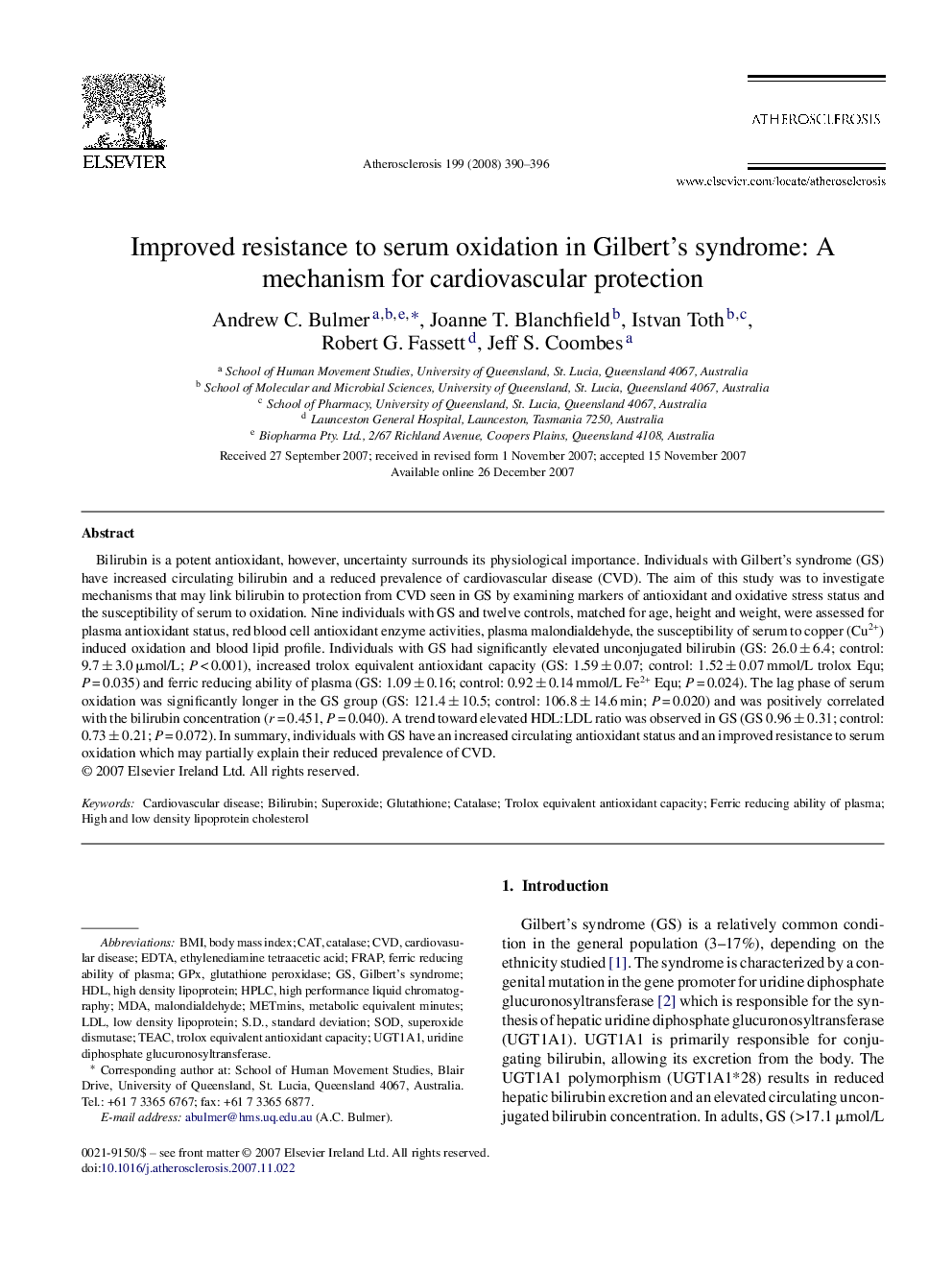| Article ID | Journal | Published Year | Pages | File Type |
|---|---|---|---|---|
| 2894150 | Atherosclerosis | 2008 | 7 Pages |
Bilirubin is a potent antioxidant, however, uncertainty surrounds its physiological importance. Individuals with Gilbert's syndrome (GS) have increased circulating bilirubin and a reduced prevalence of cardiovascular disease (CVD). The aim of this study was to investigate mechanisms that may link bilirubin to protection from CVD seen in GS by examining markers of antioxidant and oxidative stress status and the susceptibility of serum to oxidation. Nine individuals with GS and twelve controls, matched for age, height and weight, were assessed for plasma antioxidant status, red blood cell antioxidant enzyme activities, plasma malondialdehyde, the susceptibility of serum to copper (Cu2+) induced oxidation and blood lipid profile. Individuals with GS had significantly elevated unconjugated bilirubin (GS: 26.0 ± 6.4; control: 9.7 ± 3.0 μmol/L; P < 0.001), increased trolox equivalent antioxidant capacity (GS: 1.59 ± 0.07; control: 1.52 ± 0.07 mmol/L trolox Equ; P = 0.035) and ferric reducing ability of plasma (GS: 1.09 ± 0.16; control: 0.92 ± 0.14 mmol/L Fe2+ Equ; P = 0.024). The lag phase of serum oxidation was significantly longer in the GS group (GS: 121.4 ± 10.5; control: 106.8 ± 14.6 min; P = 0.020) and was positively correlated with the bilirubin concentration (r = 0.451, P = 0.040). A trend toward elevated HDL:LDL ratio was observed in GS (GS 0.96 ± 0.31; control: 0.73 ± 0.21; P = 0.072). In summary, individuals with GS have an increased circulating antioxidant status and an improved resistance to serum oxidation which may partially explain their reduced prevalence of CVD.
